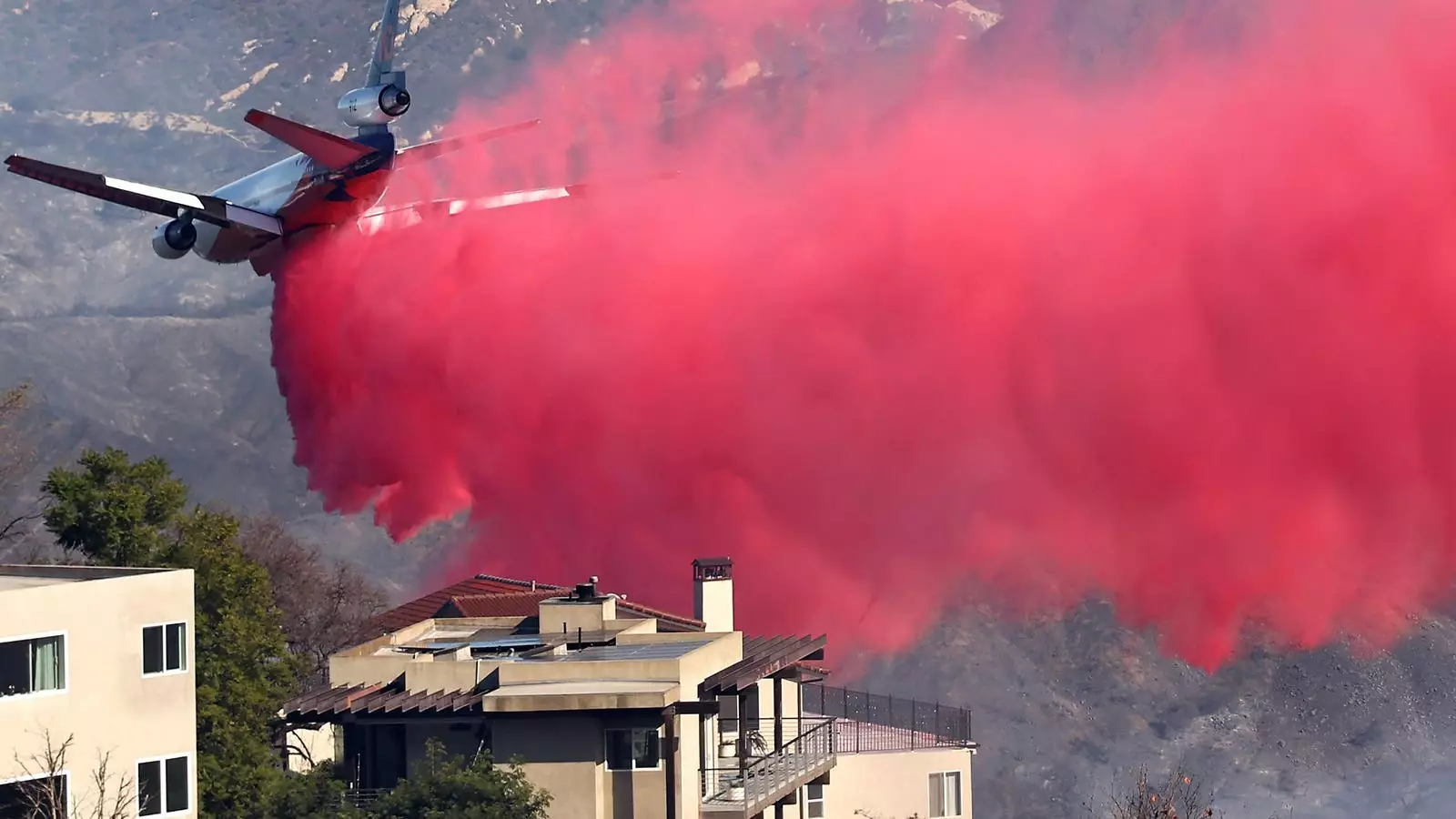Wildfires have become a recurrent threat, particularly in regions like California, where climatic conditions exacerbated by a history of drought create a fertile ground for their development. The recent blaze in the Los Angeles area exemplified this danger, as infernos fueled by fierce Santa Ana winds ravaged tens of thousands of acres, leaving destruction in their wake. With imagery likened to the aftermath of atomic bombings, the wildfires are not just environmental calamities; they pose a serious threat to public health, particularly when it comes to food safety. The warning from the USDA is pivotal: fires can render food unfit for consumption.
The smoke plumes generated by such massive fires are not confined to the local vicinity. They can travel over long distances, reaching homes located thousands of miles away. This phenomenon raises alarming concerns about food safety, as toxic substances released into the atmosphere can infiltrate residential areas far removed from the source of the flames. What makes wildfire smoke particularly insidious is its composition; it contains an array of harmful particulates and gases—many of which can permeate standard food packaging materials.
High levels of particulate matter (PM), especially PM2.5, pose a serious health risk, as these ultrafine particles can enter the human respiratory system and even alter food products when they deposit on surfaces. As recent data revealed a peak in fine particulate matter to levels up to 100 micrograms per cubic meter, which exceeds World Health Organization recommendations by a staggering margin, the importance of addressing such contamination cannot be overstated.
Food poisoning resulting from the consumption of contaminated products is a real and present danger following wildfires. Contaminants introduced through smoke can be persistent, and once food is tainted, it cannot be safely decontaminated. The Los Angeles Department of Public Health recommends that items exposed to ash should be discarded, underlining the gravity of the situation. In addition, they advise throwing away plastic containers that could have absorbed residues, while recommending cleaning glass and metal containers, provided they haven’t been severely tainted.
The danger doesn’t end with just smoke contamination. Extreme temperatures can jeopardize the integrity of food packaging, allowing bacterial infiltration into sealed containers. Moreover, fire-retardant chemicals and other substances released during combustion are known to bind with food, producing harmful compounds that could lead to significant health hazards.
The Role of Microbial Life and Long-Term Consequences
The implications of wildfires extend beyond immediate concerns. A recent study published in Ecosphere brought to light a troubling finding: wildfire smoke can serve as a transport vehicle for bacteria and fungi, potentially carrying these microbes over great distances. Specific strains of bacteria and fungi have shown resilience to extreme heat, indicating that even post-fire, there’s a risk of foodborne pathogens affecting food safety.
Experts recommend that anyone in wildfire-affected areas should discard fresh produce, raw foods, and any open air containers exposed to contaminants. This also applies to pantry staples that are not stored in airtight packaging. Such measures highlight the necessity of thorough food safety protocols during and after fire incidents to ensure public health is not compromised.
The Bigger Picture: Climate Change and Food Systems
Ultimately, the challenges posed by wildfires serve as a stark reminder of the broader implications of climate change on food systems. The fragility of our food supply chains can be exacerbated by increasingly frequent and severe environmental disasters. The nearly 200,000 displaced residents in Los Angeles and the potential rise in related health issues compels authorities to consider long-term solutions for disaster preparedness.
The interplay of environmental disasters and food safety is an urgent issue that warrants immediate attention. Adoptive measures to fortify food systems against such threats, such as improved storage solutions and public education on food safety, are essential. As witnessed in Los Angeles, the cascading effects of wildfires underscore not just a singular event but rather an ongoing challenge stemming from climate change that needs to be addressed with robust policies and community engagement.
Wildfires significantly compromise food safety far beyond their immediate geographic proximity, revealing an urgent call to action for coordinated public health strategies that keep communities safe from both the flames and their long-lasting effects on food systems.


Leave a Reply